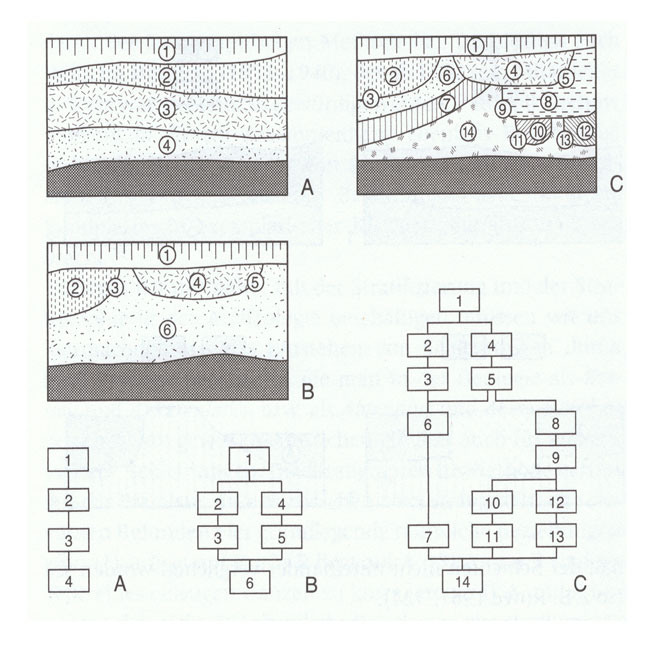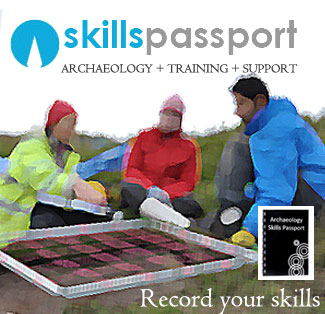Stratigraphic excavation in its basic form involves a process of cleaning the surface of the site; isolating contexts and edges which are definable in their entirety or part and then attepting to excavate or remove contexts in reverse stratigraphic order ( ie, in a backward chronology) – removing and recording he last material activity that occurred on the site back to the first. After removing a context or if practical a set of contexts such as a feature like a pit or wall., the “isolate and dig” procedure is repeated until no man made remains are left on site and the site is reduced to natural.

OVERALL PRINCIPLE: Understand the concept of physical and chronological stratigraphy as well as the methods of recording the sequences.
Stratigraphic excavation
PRINCIPLE: Be able to remove layers and fills in the correct order for structured excavation
- Novice – Be able to remove layers and fills in the correct order for structured excavation
- Competent – Can recognise new contexts, may overcut or not fully define a feature without full supervision.
- Proficient – Confident excavation of each context with little supervision, shows understanding of relationships both above, below and horizontally to their current context.
Determining relationships
PRINCIPLE: Be able to analyse and resolve relationships between features, where this is unclear, utilising the most appropriate method for a solution. To understand the relevance of determining relationships within an excavation.
- Novice – Can recognise where determining relationships between features is needed, however needs assistance to investigate.
- Competent – Can recognise where determining relationships between features is needed and choose the appropriate method to investigate this association, however requires some assistance to clearly identify the stratigraphic link.
- Proficient – Confidently recognise and determine the physical and chronological relationships between features and chooses the appropriate method to investigate associations to resolve stratigraphic links.
Professional tips:
Understanding stratigraphy is no harder than understanding the way a trifle is created, and should almost always be dug one layer at a time. Try not to excavate any lower layer until you have fully removed the previous one.
The secret to understanding the nature of physical/stratigraphic relationships is the simple question: Are there other actions that happen between the contexts. If yes, then he relationship is physical only.
The best place to record every physical stratigraphic relationship is in the field – you do not get a second chance.
Although some people do not agree with the Harris Matrix – this is the best way to understand the complex relationships between contexts. In many cases, you will not be able to tell which came first, all you have to do is split the matrix lines.
The Harris Matrix was invented in 1973 by Dr. Edward C. Harris and for the first time provided archaeologists with a means to view stratigraphic sequences in diagram form. It has since been adopted by professionals worldwide.
Principles of Archaeological Stratigraphy, Dr. Ed Harris ( available free) http://www.harrismatrix.com/harrisbook.html
Below are examples of three stratigraphic sequences with corresponding Matrices


